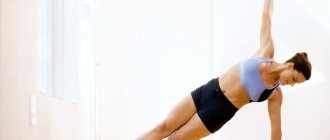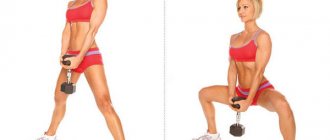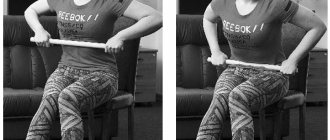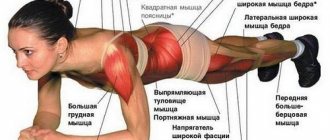- Efficiency
- Execution technique
- Kinds
- Useful tips
- Program
The plank is a very popular exercise for weight loss.
It is an ideal option for those who suffer not only from extra pounds, but also from time pressure. Just a few minutes a day - and within a month, or even earlier, according to reviews and promises from fitness trainers, results will be noticeable. At first glance, the technique for performing it is as simple as possible: just think - you need to stand in one position for some time, without running, without jumping, and without sweating off yourself in three streams. In fact, those who are unprepared cannot withstand even a minute, which means the load on the body is colossal. What's the magic?
Efficiency
The benefit of this exercise lies not only in freeing the body from fat folds. First of all, experts consider it as part of the treatment of certain diseases.
When performed regularly and correctly, it can:
- pump up the back muscles well;
- eliminate manifestations of osteochondrosis of the neck and lower back;
- have a significant impact on the muscles of the arms, legs, abs and buttocks;
- make the following muscles work to the limit: external and internal obliques, transverse abdominal muscles, rectus abdominis;
- improve posture;
- relieve pain in the shoulder blades and spine;
- increase blood circulation;
- prevent the negative consequences of a sedentary lifestyle.
But will the plank exercise help you lose weight? There is no doubt about this, since after just a month of regular exercise the results will be visible to the naked eye:
- fatty tissue will disappear primarily on the lower part of the body, so the bar is recommended for losing weight in the abdomen and sides;
- waist size will decrease by 2 cm;
- weight will drop to 4 kg;
- the buttocks will become firmer;
- the legs will become slender, since their muscles bear the main load;
- your tummy will finally be flat due to the powerful training of your abdominal muscles;
- your arms will lose weight and at the same time become pumped up, since the triceps and biceps are actively involved in the training.
When it comes to how many calories the plank exercise burns, opinions differ. Typically, figures are given from 5 to 12 calories per minute. It depends on your weight, correct training, and all sorts of complications of the classic version of the stance.
One of the main advantages of this method of losing weight is the absence of contraindications, only benefits for the body and organism. The only harm it can cause is soreness. But over time, the muscle pain that is characteristic of any sports activity should go away.
What will happen to you if you do planks every day?
The core muscles provide support to the internal organs. They also help promote good posture and help avoid lower back injuries. Doing planks every day will primarily help you strengthen these muscles. Moreover, just one exercise involves all the main muscle groups of the core at once:
- transverse muscle - helps lift heavy weights;
- rectus muscle - helps to jump better, it is also responsible for the “cubes”;
- oblique muscles - expand the possibilities of lateral bending and twisting at the waist;
- buttocks - will support your back and give a beautiful profile.
The condition of the back muscles will improve
Doing a plank will allow you to build your core muscles without the risk of putting unnecessary stress on your back and hips. Moreover, regularly doing the plank will strengthen not only the lower part of the body, but also the upper part. This will reduce the risk of back pain.
Metabolism will speed up
The plank burns more calories than classic abdominal exercises - crunches and sit-ups. Even 10 minutes of strength training a day speeds up your metabolism. And for quite a long time: even at night you will burn more calories. A nice bonus for those who want to lose weight.
Posture will improve
Strengthening the core muscles has a profound effect on the neck, shoulders, back and lower back. Doing planks every day will help keep them in the correct position and improve your posture.
Develop a sense of balance
How long can you stand on one leg? Just a couple of seconds? Then you need to strengthen your abdominal muscles. The plank will help with this. By the way, a developed sense of balance will help you achieve great results in any sport.
EpicStockMedia/Depositphotos.com
Improved flexibility
Thanks to the bar, the muscles and ligaments attached to the shoulders, shoulder blades, collarbones, hips, even toes are stretched. You can also work your obliques with the side plank. By increasing your flexibility throughout your entire body, you'll gain additional benefits in all your other exercises and in everyday life.
Your psychological state will improve
The plank has a special effect on the nerves, strengthening the muscles that are active in stressful situations. After a whole day in a work chair, your whole body becomes numb and you feel tense. As a result, your mood worsens, you become lethargic and sad. Doing planks daily will help improve your mood and have a positive effect on the nervous system.
Just 5-10 minutes will give you a boost of energy for the whole day, and repeated daily will last you a lifetime. Here, for example, is a five-minute complex with which you can start today.
Execution technique
If you decide to lose weight this way, first you should find out how to do the exercise correctly, because violations in the technique can be fraught not only with muscle pain, but also with a lack of results.
Description
Take the starting position - lie on the floor with your stomach down. Straighten your arms, lift your body up. Your hands should be under your shoulders. Tuck your pelvis. Stay in this position for as long as the training program requires (from 20 seconds to 5 minutes). Relax. Repeat several times, again in accordance with your individual lesson plan (from 1 to 5 times).
Nuances
- You need to keep your feet together. This will make it more difficult to maintain balance, but the load will be more noticeable, and weight loss will be more effective.
- Strain your legs as much as possible and stretch them into a string.
- Tighten your stomach. Don't let it sag. This will reduce the benefits of training.
- Keep all parts of the body tense, especially the arms, legs and buttocks.
- Want to improve your results? Intensely contract and relax your gluteal muscles in this pose.
Common mistakes
- You should not bend in the lower back, as this allows the abdomen to relax and sag, and can also cause back pain.
- You can't put your head down. You cannot concentrate only on the lower part of the body - this will relax the head and cervical spine. You need to keep your head straight, your eyes can be closed or lowered to the floor.
- You can't hold your breath. This can cause dizziness, nausea and even loss of consciousness. Experts advise inhaling slowly through your nose and exhaling through your mouth.
Please note. Exercise helps you lose weight only with the correct technique.
How to do the Planck exercise: important rules
At first glance, “Plank” is very easy to do, but it only seems so. In fact, proper execution requires significant physical effort and high concentration. In the gym you can often see a picture where a person stands in this position for several minutes and even has time to take a nap. It is highly likely that he is doing the exercise incorrectly. As a result, the effect is zero, and back pain cannot be avoided.
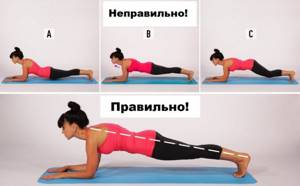
Can be performed with any physical fitness
If the goal of exercise is a toned stomach, a beautiful figure and good health, you need to follow several important rules:
the body should be strictly in a straight line, all parts of the body from the feet to the top of the head form a straight line; the buttocks should be tense, the stomach should be pulled in; bending the pelvis, back, or lifting them up is not allowed; the feet can be placed side by side or shoulder-width apart; the closer they are to each other, the more tension is created in the abdominal muscles; the duration of the exercise depends on physical fitness, it is recommended to start with 10–20 seconds, gradually increasing the time to several minutes; It is advisable to have a stopwatch in front of your eyes to record daily results and progress; it is important to fully concentrate on your body and sensations, discard unnecessary thoughts, breathe evenly and measuredly;

Universal - suitable for both women and men
- you need to constantly listen to your body, do not perform the exercise through pain;
- the number of approaches does not play a decisive role (3–5 is enough), the time of holding the plank is important;
- As you gain experience, you can diversify the program with various variations of the exercise and supplement it with other workouts;
- To achieve a good result, regularity of exercise is important - it is advisable to allocate 5 minutes daily, possibly several times a day;
- if there are diseases of the musculoskeletal system and the cardiovascular system, a preliminary consultation with a doctor is necessary;
- Chronic pathologies in the acute period are temporary contraindications for exercise.
Kinds
There are different plank options. Selecting the right one depends on the level of physical fitness, desire to experiment and achieve excellent results. The classic model is for beginners, and for those who are already familiar with it, you can create a whole set of exercises from different stances.
Classic

- Lie down on your stomach.
- Bend your elbows at an angle of 90°, take a lying position. The body resembles a straight line from head to heels.
- The support falls on the forearms and toes (or rather, their tips).
- Elbows should be located under the shoulders.
- The abdominal muscles are tense and do not relax for a minute.
- Fixation time is from 20 seconds to 5 minutes.
Lateral
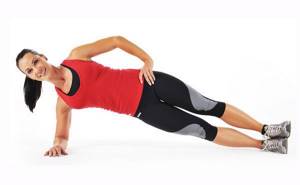
The side plank is more effective than the classic exercise, since only 2 support points hold the weight. As a result, you need to not lose your balance and strain your body.
- Lie on your right side.
- Place your elbow under your shoulder.
- The left hand is on the left thigh.
- Tighten your abs, raise your pelvis until a diagonal forms.
- Fix for 30-50 seconds.
- Do the same on the other side.
With your leg up

This plank reduces the area of support, which leads to an increase in the load on the abdominal muscles. So if you are looking to lose weight around your waist, this option is ideal for you.
- Get into a classic plank position.
- Raise your straightened leg up above your shoulders. The position of the body should remain unchanged.
- Pull the toes on the raised leg towards you.
- Fixation - 30-40 seconds.
- Repeat the same for the other leg.
With your hand raised
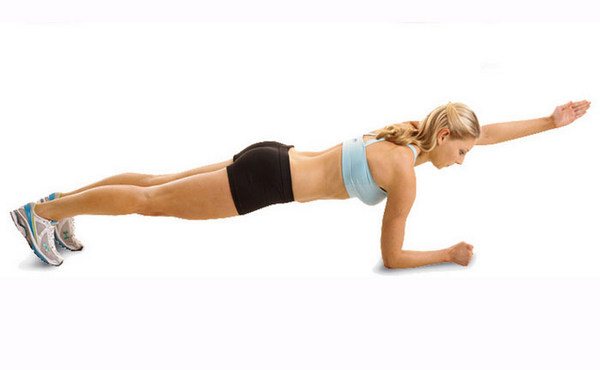
A very effective option for weight loss, but only suitable for the most trained. It is a classic, but the support is only on one hand. The second is moved either to the side or behind the back. Hands change one by one.
Lateral complicated
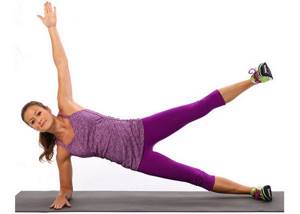
One of the most difficult plank forms, but incredibly useful for weight loss, since all the muscles of the hips and abdomen have to work hard.
- Lie on your side. Connect straightened legs.
- Place your left forearm so that your elbow is under your shoulder.
- Raise your body to a straight line.
- Raise your right limbs up.
- Lock in for as long as possible.
- Repeat the same for the other side.
On the ball

If you love fitball and are already accustomed to the classic plank, combine these techniques and the fat folds will go away even faster. The main thing is to stay on the ball without pulling your neck into your shoulders.
- Repeat the classic version of the plank, resting your elbows not on the floor, but on the fitball. You can first kneel down, leaning on the ball, and roll it forward until your back straightens.
- Straighten your knees.
- Hold for 2-3 seconds.
- Lower your knees slightly and touch the floor.
- Initial position.
- Repeat 7-15 times for 3 approaches.
You can perform various exercises in the plank, combining them with each other into the most effective complexes. The main thing is to learn how to accurately do a classic stance.
Workout program for 30 days table
To practice this exercise, just the desire to have a slim figure is not enough. In addition, endurance, time and willpower are required. To reduce your focus on your fatigue and tension, listen to upbeat, rhythmic music during your workout.
When the minute stand is easy, you can move on to more complex variations and increase the load with additional equipment: a ball, dumbbells - they will help develop coordination of movements
But at the same time, caution and a slow pace of changing body position will not hurt, otherwise back injuries are possible
Did you know? Each muscle in the human body is individual and differs in the time spent on its recovery. The triceps are considered the fastest in this regard, and the slowest are the back muscles. On average, it takes about 48 hours for these tissues to fully regenerate, provided that you get 8 hours of full sleep.
We offer a 30-day training program for men, consisting of different plank variations. The training is designed for 3–4 approaches.
| Day | Plank Variation | Stand and rest time, in seconds |
| 1 | Classic (on the elbows) | 20 |
| 2 | Complicated classic with left arm extended forward | 20 |
| 3 | Classic (on the elbows) | 30 |
| 4 | Complicated classic with the right hand extended forward | 30 |
| 5 | Lateral | 20 per side |
| 6 | Rest | — |
| 7 | Classic (on the elbows) | 30 |
| 8 | Complicated classic with one arm extended forward | 30 |
| 9 | Classical | 30 |
| 10 | Classic with outstretched arm | 30 |
| 11 | Lateral | 30 per side |
| 12 | Rest | — |
| 13 | Classic (on the elbows) | 45 |
| 14 | Classic with outstretched arm | 45 |
| 15 | Classical | 30 |
| 16 | Classic with outstretched arm | 30 |
| 17 | Lateral | 30 per side |
| 18 | Rest | — |
| 19 | Classic with outstretched arm and leg | 60 |
| 20 | Lateral | 40 per side |
| 21 | Classic with a complication of arm or leg swings | 60 |
| 22 | Lateral | 40 per side |
| 23 | Rest | — |
| 24 | Classic with a complication of arm or leg swings | 60 |
| 25 | Lateral | 40 per side |
| 26 | Classic with a complication of arm or leg swings | 60 |
| 27 | Rest | — |
| 28 | Classic (on the elbows) | 60 |
| 29 | Superman plank | 60 |
| 30 | Superman plank | 60 |
class="table-bordered">
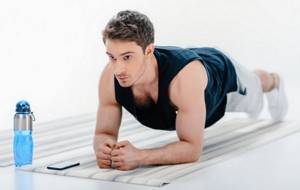
Important! You should not start a training program without prior preparation. Otherwise, due to excessive load and arbitrary violations of technique, pain in the back area is possible. We hope our article will help you avoid unpleasant consequences
We hope our article will help you avoid unpleasant consequences.
Useful tips
When, after a month of regular training, the scale shows several kilograms less than the initial weight, and your favorite jeans finally begin to fasten, the question of whether the plank exercise affects weight loss will disappear by itself. The main thing is to maintain this result further. And to improve it, it is advisable to listen to the advice of experienced trainers.
- Start with the minimum amount of time you can hold in a plank and increase it by 20-30 seconds daily.
- Training should be done every day.
- After a month, having mastered one option, surprise the body, create a stress situation for it and start performing another type of exercise. This will allow you to consolidate your weight loss results and continue to shape your figure. Do not stop.
- You can start any workout with a plank as a warm-up - strength and cardio, at home and in the gym, running and working out on a machine.
- Eat right so that the fat folds go away forever. Don't overeat before bed. Light diets for faster weight loss are welcome.
- Get enough sleep.
- Drink plenty (up to one and a half liters per day) of water.
By following these recommendations, you can achieve excellent results within a month of regular and proper training. It is not without reason that it is believed that the plank is the best exercise for losing weight, which does not require time or financial investment and is accessible to absolutely everyone at home.
How many sets of planks should you do in one workout?
Each of us dreams of having a beautiful, toned figure. But it’s not always possible for a person to devote time to a full workout in the gym.
But there is a very simple exercise, the regular implementation of which will allow you to quickly achieve the desired result. This exercise is a plank.
Used in fitness, Pilates and yoga, this exercise is considered one of the most effective today. Let's take a closer look at how the plank exercise is performed and how many approaches you need to do.
Main benefit
We can talk about the benefits of this exercise for quite a long time. To begin with, doing the plank affects the main muscle groups.
It is important to consider: the plank is a static exercise. In other owls, when performing it, a person does not make any movements
At the same time, the muscles of the abdomen, back, arms, legs and buttocks are very tense, and one might say, they are actively working.
What does the bar give?
It strengthens the muscle corset, makes the stomach more toned, legs – slender, and buttocks – rounded.
With regular exercise, the back muscles are strengthened (and this has a beneficial effect on the condition of the spine), metabolism and blood pressure are normalized, sleep and mood are improved, irritability and depression disappear.
Execution Rules
The plank exercise is very simple to perform. Starting position - lying on your stomach, arms bent at the elbows, resting on the floor.
It is important to take into account that the elbows should be exactly under the shoulders. Leaning on your fingertips, you need to lift your body so that it forms a straight line
The emphasis is on the arms and legs, the back is straight, the abdominal and leg muscles are as tense as possible. It is very important to avoid arching your lower back - otherwise the effectiveness of the exercise will be lost and the risk of injury will increase.
For those who have not previously engaged in sports, the first time should hold the bar for 20-30 seconds. Then - a short break and repetition of the exercise. It is advisable to do 3-5 approaches at a time. When performing the plank exercise regularly, approaches should gradually be made longer.
Note!
That is, for a week, morning and evening, stand in the plank for 30 seconds (and so 5 approaches). Next week you can increase the duration of execution to 40-45 seconds, then to a minute.
In fact, the number of approaches of the plank exercise depends solely on the physical condition of the person. So, someone can easily do 5 approaches of 2 minutes, while others find it difficult to do 3 approaches of 30 seconds. Therefore, beginners should not immediately try to do the exercise for as long as possible - excessive stress on unprepared muscles can lead to certain problems.
For those who have been doing the plank exercise for a long time, the number of approaches can be increased. Or just start doing more complicated options:
- on one arm (side plank);
- on one arm and one leg;
- with weighting;
- with twists;
- on fitball.
But these exercises are suitable only for those whose body is prepared by regular and long-term (at least 6-9 months) performance of the classic plank.
We recommend watching a useful video with the technique of performing the exercise.
Program
Static exercise does not require much training time, but the exercises must be systematized. Therefore, try to stick to a month-long program from the very beginning that will improve your performance.
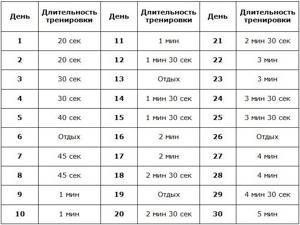
Spending just 5 minutes a day (and that's the maximum!), you can adjust your waist, buttocks and hips, reducing their volume while maintaining beautiful definition. The long-awaited elimination of fat folds will give you a feeling of lightness. It’s not without reason that this unique exercise is included in all well-known body work programs - bodybuilding, yoga and fitness.
How long to hold the bar
Each of the training options requires not only regular implementation, but also increased load. Standard training intensity is 3 times a week.
Table for beginners for 30 days:
- 1-2 days – 20 seconds;
- 3-4 – 30 sec.;
- 5 – 40 sec.;
- 6 – break;
- 7-8 –40 sec.;
- 9-11 – 1 minute;
- 12 – 1 minute 30 seconds;
- 13 – rest;
- 14-15 – 1 minute 30 seconds;
- 16-17 – 2 minutes;
- 18 – 2 minutes 30 seconds;
- 19 – break;
- 20-21 – 2 minutes 30 seconds;
- 22-23 – 3 minutes;
- 24-25 – 3 min. 30 sec;
- 26 – break;
- 27-28 – 4 min.;
- 29 – 4 minutes 30 seconds;
- 30 – 5 minutes.
What muscles work?
The effectiveness of the exercise is due to the maximum possible involvement of all muscle groups, but the dynamic plank is much more effective. Here are the muscles that work during such physical activity:
- muscles of the arms and shoulder girdle - fascia, teres, deltoid, triceps, brachialis;
- leg muscles - gastrocnemius, biceps, gluteus and sartorius with straightened legs;
- core muscles - transverse, internal and external obliques, as well as rectus abdominis;
- back muscles - latissimus, trapezius, splenius.
It is important to remember that it is the correct execution that engages and makes the previously listed muscle structures work.
Why do you need an elbow bar?
The elbow bar is needed primarily to:
- strengthen the core muscles;
- the abs held your flaccid tummy;
- your spine felt safer;
- you had beautiful posture.
If after these words you still don’t understand whether elbow bars are needed at all, then the main argument for you should be that you will become as fashionable as everyone around you who boasts on their Internet that they start their morning from the bar.
Contraindications and common mistakes
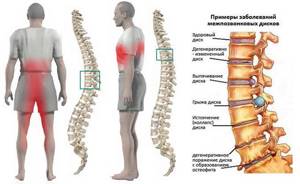
Spinal diseases are a contraindication to performing the exercise
The plank has many advantageous features, but do not forget about the contraindications for doing it. There are a number of restrictions:
- Recent caesarean section (before 6 months).
- Diseases or pathologies of the development of the cardiovascular system.
- Carpal tunnel syndrome.
- High blood pressure.
- Rehabilitation period after surgery.
- Spinal injuries.
- The period of exacerbation of chronic diseases, the course of acute pathologies.
- Hernia and pathologies of intervertebral discs.
- Tendon and ligament injuries.

During pregnancy, it is also not recommended to overdo physical exercise, unless we are talking about professional athletes.
Despite the fact that the exercise is simple, almost all beginners make common mistakes.
- Indirect body position - sagging of the body in the pelvic area will not strengthen the muscle corset and will cause pain in the lumbar and back areas.
- Holding your breath. For high-quality muscle development, you need to breathe evenly, without sudden inhalations and exhalations.
- Look up or down. While performing the exercise, you need to look in front of you. Looking down greatly simplifies the process of doing the plank, but it only leads to the development of neck problems.
A common mistake that deserves attention is shaky knees. The legs must be clearly fixed, otherwise this may cause the development of joint diseases.
